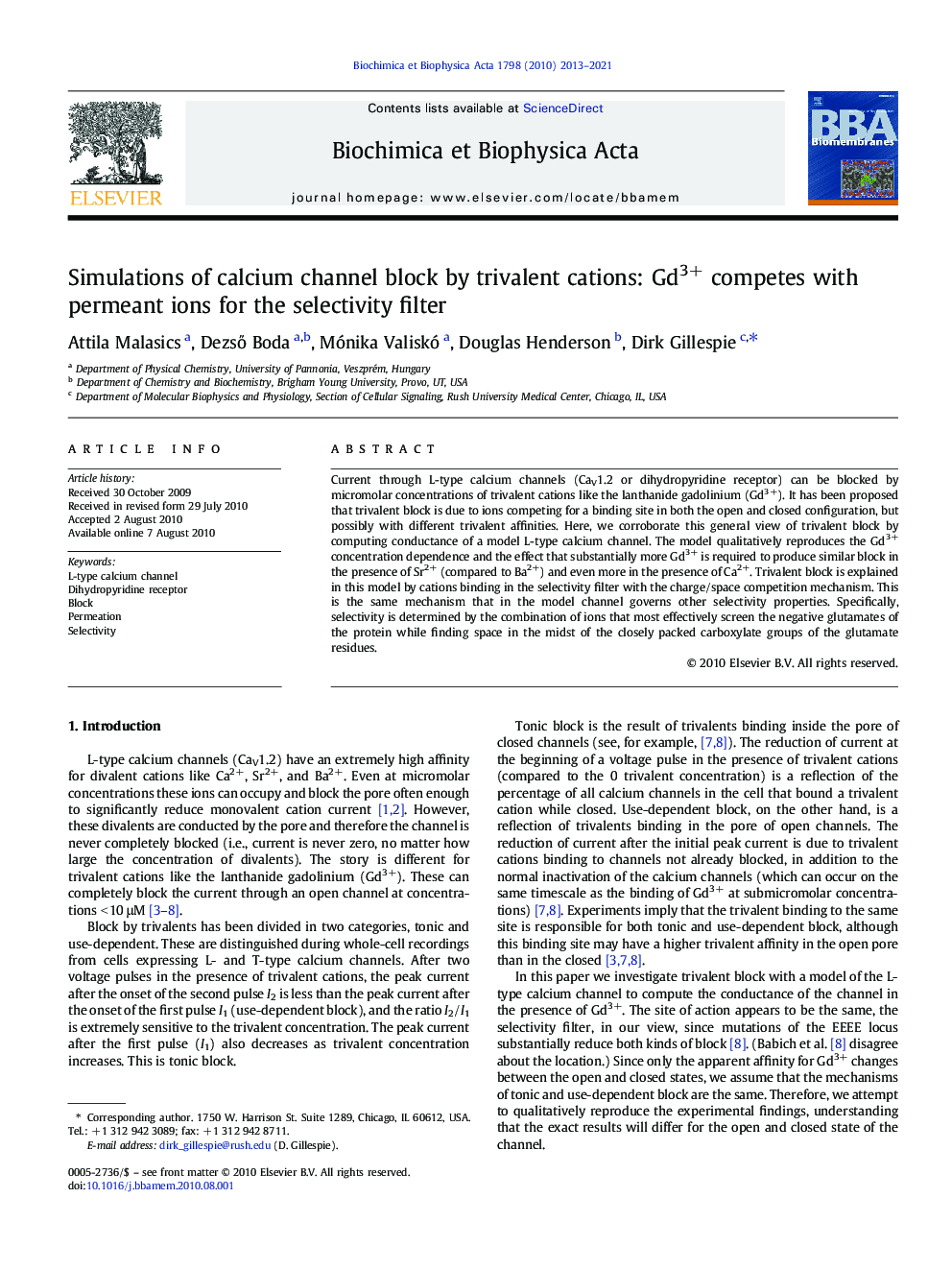| Article ID | Journal | Published Year | Pages | File Type |
|---|---|---|---|---|
| 1944665 | Biochimica et Biophysica Acta (BBA) - Biomembranes | 2013 | 9 Pages |
Current through L-type calcium channels (CaV1.2 or dihydropyridine receptor) can be blocked by micromolar concentrations of trivalent cations like the lanthanide gadolinium (Gd3+). It has been proposed that trivalent block is due to ions competing for a binding site in both the open and closed configuration, but possibly with different trivalent affinities. Here, we corroborate this general view of trivalent block by computing conductance of a model L-type calcium channel. The model qualitatively reproduces the Gd3+ concentration dependence and the effect that substantially more Gd3+ is required to produce similar block in the presence of Sr2+ (compared to Ba2+) and even more in the presence of Ca2+. Trivalent block is explained in this model by cations binding in the selectivity filter with the charge/space competition mechanism. This is the same mechanism that in the model channel governs other selectivity properties. Specifically, selectivity is determined by the combination of ions that most effectively screen the negative glutamates of the protein while finding space in the midst of the closely packed carboxylate groups of the glutamate residues.
Research highlights►trivalent cations block calcium channels by competitive binding with permeant ions ►modeling shows block is consistent with trivalent binding in selectivity filter ►amount of trivalent binding determined by charge/space competition mechanism
